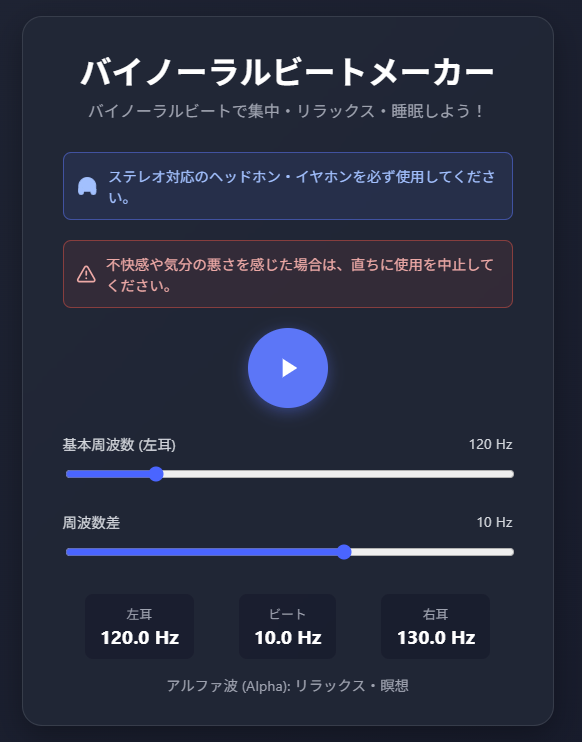What are Binaural Beats?
The human brain creates “sounds that shouldn’t be heard” (beats) by playing slightly different frequencies to each ear. This phenomenon is called binaural beats.
Binaural beats are a phenomenon where “the brain perceives the frequency difference” and occur through a brain function called FFR (Frequency Following Response).
When you play, for example, 440Hz to the left ear and 445Hz to the right ear, a rhythm of that difference (5Hz) is generated in the brain, and you feel this beat.
Audio utilizing this effect has long been used to assist with concentration, relaxation, sleep, and more.
Let’s Listen
- Different effects are achieved with different frequencies
-
1–4 Hz: Δ (Delta) waves → Sleep & deep rest
-
4–8 Hz: Θ (Theta) waves → Meditation & dream state
-
8–12 Hz: α (Alpha) waves → Relaxation & creative thinking
-
12–30 Hz: β (Beta) waves → Focus & alert state
-
※ Stereo headphones are essential
Headphones are required to deliver independent signals to both ears.
I created an app to play with binaural beats.
You can try binaural beats right away with the following tool! Please give it a try!

Trying it with Python
You can easily generate audio files with Python too. The following code creates stereo audio (10 seconds) with 440Hz in the left ear and 445Hz in the right ear:
# pip install numpy soundfile
import numpy as np
import soundfile as sf
rate, dur = 44100, 10
t = np.linspace(0, dur, rate * dur, endpoint=False)
left = 0.5 * np.sin(2 * np.pi * 440 * t)
right = 0.5 * np.sin(2 * np.pi * 445 * t)
stereo = np.stack((left, right), axis=-1)
sf.write("binaural_10s.wav", stereo, rate)
☕ Final Note
My ears got tired while listening to binaural beats while creating this article.
Maybe it’s better to do it with music.